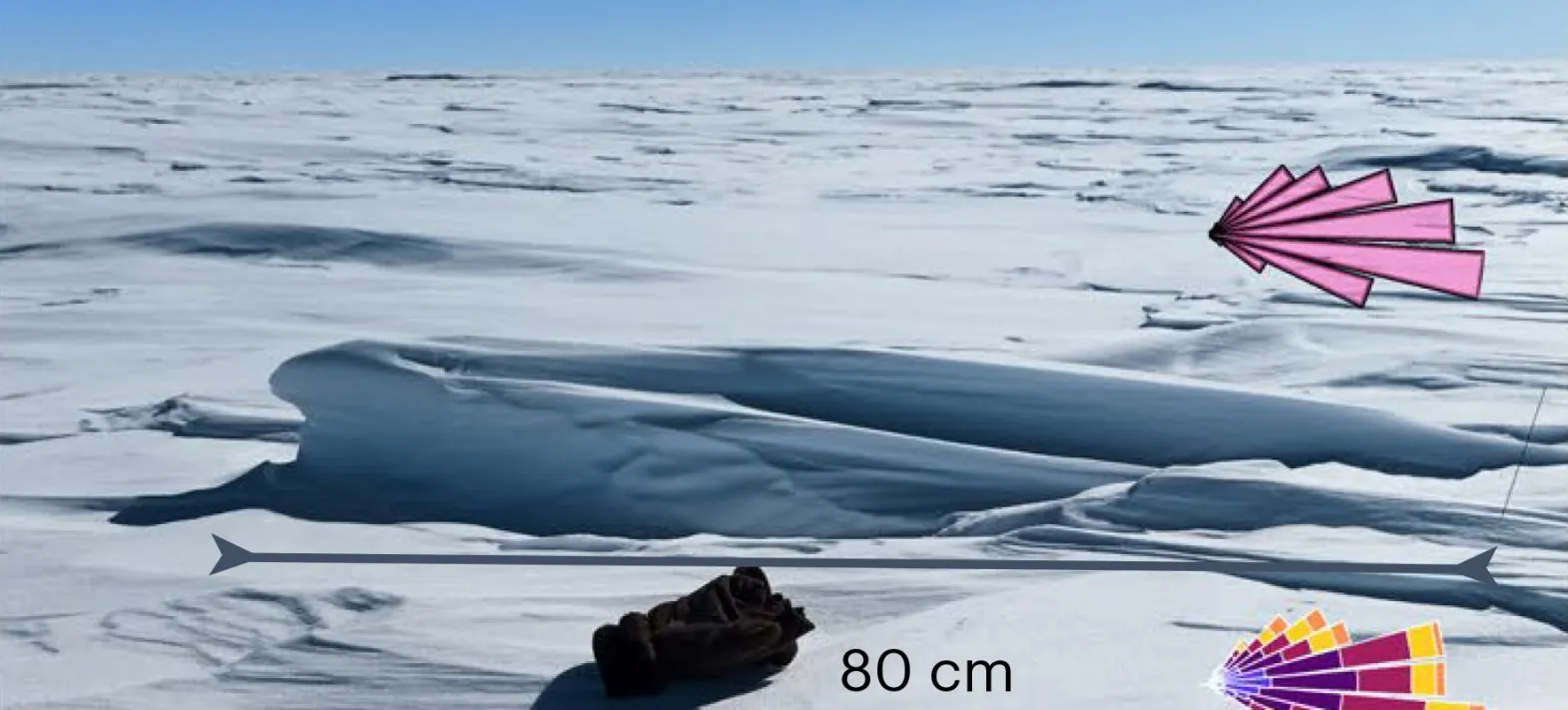Follow us on Google News (click on ☆)
By comparing these observations with models developed for sand dunes, the team highlighted similarities but also crucial differences in the formation mechanisms.

At the heart of the southernmost and coldest continent on Earth lies an unexpected landscape. A team including researchers from the Institute of Environmental Geosciences (IGE - OSUG) and the IPGP has just revealed that Antarctica is home to the largest dune field on our planet. Unlike hot deserts, these dunes are made of snow. This surprising discovery opens up new perspectives on the dynamics of snow in Antarctica and the interpretation of climate signals from ice cores.
The study reveals that Antarctic snow is surprisingly resistant to being transported by the wind, mainly due to its strong cohesion. This property significantly influences snow dynamics on the continent.
Indeed, the transportation of snow by wind is an important, yet poorly understood, factor in this context. This advancement in understanding the processes that shape snow structure could refine models of Antarctic ice sheet evolution.
In the long term, it also opens up new possibilities for improving our understanding of the ice sheet's mass balance1 in the face of climate change—a crucial step in predicting its future impact on sea levels.

a, Map of Antarctica showing the location of photographed dunes.
b, Sastrugi (erosion structures).
c, Barchans (crescent-shaped dunes).
d, Oblique dunes relative to the main wind direction.
e, Longitudinal dunes.
f, Megadunes (transverse antidunes).
g, Longitudinal dunes in e with the altitude profile superimposed. The wind roses correspond to wind patterns since the last snowfall (d, e, g) or the annual wind regime (f) from the ERA5 reanalysis.
Credit: g, Pléiades © CNES (2022), Distribution Airbus DS.
Note:
1. Mass balance: the difference between accumulation (snowfall, frost) and ablation (melting, sublimation, iceberg calving) of ice on an ice sheet. It is crucial for understanding the evolution of ice sheets and their contribution to sea level rise.
Reference:
M. Poizat, G. Picard, L. Arnaud, C. Narteau, C. Amory & F. Brun, Widespread longitudinal snow dunes in Antarctica shaped by sintering. Nat. Geosci. (2024). DOI: 10.1038/s41561-024-01506-1.